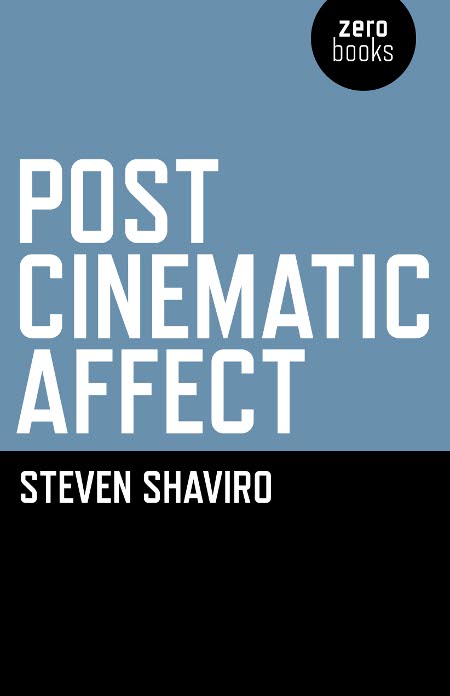I’ve been meaning for some time to give my own take on Mattias Stork’s video-essay, “Chaos Cinema,” which has made quite a sensation in the blogosphere. I think that what Stork is talking about is pretty much the same as what I referred to in my book Post-Cinematic Affect under the rubric of post-continuity. I find Stork’s essay very useful and illuminating for the way that it highlights and describes the stylistic changes in recent Hollywood action films; but I also think he is too monolithic in dismissing this style as an inferior (and almost necessarily exploitative) form of filmmaking. (Many of my problems with Stork’s piece have already been addressed by Matthew Cheney, who very kindly mentions my own work as a counter-example to Stork’s overall claims). In any case, rather than write a full-fledged response to Stork at this point in time, I have decided to make my prospective answer into a proposal for a paper to be given (if it is accepted) at the next Society for Cinema and Media Studies conference.
Here is the full text of my proposal (though, as it exceeded the space limit for proposals, my actual submission is an abridgement of this):
POST-CONTINUITY
In my book Post-Cinematic Affect (2010), I argue that American commercial filmmaking has, in the last decade or so, been increasingly characterized by what I call the stylistics of post-continuity. This is a filmmaking practice in which a preoccupation with moment-to-moment excitement, and with delivering continual shocks to the audience, trumps any concern with traditional continuity, either on a shot-by-shot level or in terms of larger narrative structures.
Post-continuity stylistics is an offshoot, or an extreme development, of what David Bordwell calls intensified continuity. Bordwell demonstrates how, starting with the New Hollywood of the 1970s, commercial filmmaking in America and elsewhere has increasingly involved “more rapid editing… bipolar extremes of lens lengths… more close framings in dialogue scenes…[and] a free-ranging camera.” But although this makes for quite a different style from that of classic Hollywood, Bordwell does not see it as a truly radical shift: “far from rejecting traditional continuity in the name of fragmentation and incoherence,” he says, “the new style amounts to an intensification of established techniques.”
I argue that this situation has changed in the twenty-first century. The expansion of the techniques of intensified continuity, especially in action films and action sequences, has led to a situation where continuity itself has been fractured and devalued, or fragmented and reduced to incoherence. Bordwell himself implicitly admits as much, when he complains that, in recent years, “Hollywood action scenes became ‘impressionistic,’ rendering a combat or pursuit as a blurred confusion. We got a flurry of cuts calibrated not in relation to each other or to the action, but instead suggesting a vast busyness. Here camerawork and editing didn’t serve the specificity of the action but overwhelmed, even buried it.” In mainstream action films by Michael Bay, Tony Scott, and Paul Greengrass, as well as in lower-budget action features by directors like Mark Neveldine and Brian Taylor, continuity is no longer “intensified”; rather, it is more or less abandoned, or subordinated to the search for immediate shocks, thrills, and spectacular effects by means of all sorts of non-classical techniques. This is the situation that I refer to as post-continuity.
Recently, the question of post-continuity cinema has come to the foreground of discussion, thanks in great part to Mattias Stork’s video-essay, “Chaos Cinema,” which argues that, in recent commercial films, “we’re not just seeing an intensification of classical technique, but a perversion,” which is “marked by excess, exaggeration and overindulgence.” Stork’s essay has the great virtue of clearly defining the characteristics of these new cinematic practices, and of both showing and explaining how they differ from the more classical action sequences of directors like Sam Peckinpah, John Woo, and John McTiernan. However, it seems to me that Stork is too monolithic, and even moralistic, in his outright dismissal of nearly anything made in the post-continuity, “chaos cinema” style. Despite his grudging exception for Kathryn Bigelow’s Hurt Locker (which in my view, is still a film that largely observes a more classical conception of continuity), Stork largely regards post-continuity cinema as “an easy way for Hollywood movies to denote hysteria, panic and disorder,” leading to audiences “sensing the action but not truly experiencing it.”
In my talk, I will take a more nuanced look at post-continuity cinema, considering its virtues as well as its defects. I will consider the ways in which post-continuity stylistics are expressive both of technological changes (i.e. the rise of digital and Internet-based media) and of more general social, economic, and political conditions (i.e. globalized neoliberal capitalism, and the intensified financialization associated with it). I will suggest a strong affinity between what Stork calls “the woozy camera and A.D.D. editing pattern of contemporary releases,” and the minimalist and relativel static styles of recent low-budget horror films (like the Paranormal Activity series), “mumblecore” slice-of-life films, and reality television. All of these are post-continuity, in the sense that they do not altogether dispense with the concerns of classical continuity, but move ‘beyond’ it or apart from it, so that their energy and investments point elsewhere. Like any other stylistic norm, post-continuity stylistics involves films of the greatest diversity in terms of their interests, committments, and aesthetic values. What unites, them, however, is not just a bunch of techniques and formal tics, but a kind of shared episteme (Michel Foucault) or structure of feeling (Raymond Williams).
